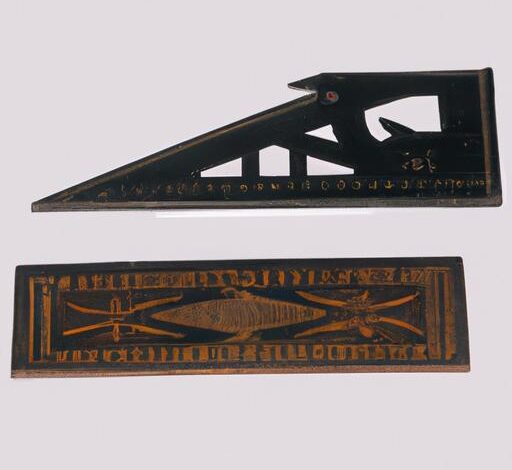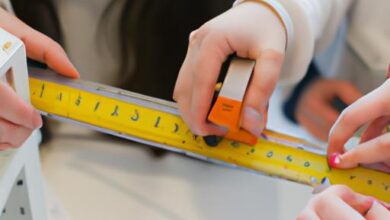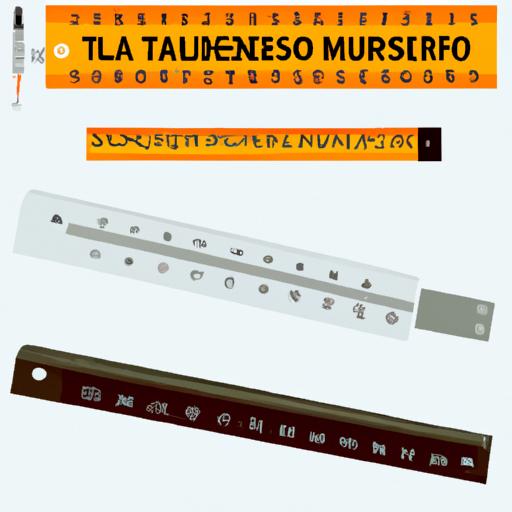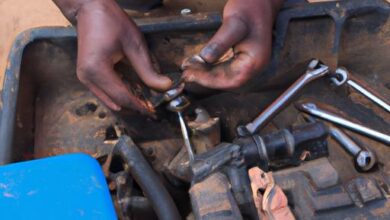Measuring Tools Used in Ancient Times: Unveiling the Secrets of Ancient Civilizations

Imagine a time before the digital era, where ancient civilizations relied on their ingenuity and resourcefulness to measure and calculate with utmost precision. From the majestic pyramids of Egypt to the bustling streets of Rome, measuring tools played a pivotal role in shaping the architectural marvels and infrastructures we admire today. Join me on a journey through time as we delve into the world of measuring tools used in ancient times and uncover the secrets of these ancient civilizations.
Introduction
A. Brief Overview of Ancient Civilizations and Their Technological Advancements
In ancient times, civilizations like Egypt, Mesopotamia, Greece, and Rome flourished, leaving behind a legacy of remarkable achievements in various fields. These civilizations were pioneers in science, mathematics, engineering, and architecture, laying the foundation for modern-day advancements. While we marvel at their grand structures, it is important to acknowledge the measuring tools that enabled them to create such wonders.
B. Importance of Measuring Tools in Ancient Times
Measuring tools were not mere instruments; they were the keys that unlocked the potential of ancient civilizations. These tools allowed architects, engineers, astronomers, and surveyors to accurately measure distances, areas, volumes, and time. They were crucial in land surveying, construction, astronomy, and even in determining the water levels of rivers. The precision and accuracy of these measuring tools were instrumental in the creation of magnificent structures and the organization of vast empires.
As we embark on this exploration, let us marvel at the ingenuity and expertise of ancient civilizations, and discover the fascinating measuring tools that shaped their world. Join me in the next section as we delve into the intriguing world of ancient Egyptian measuring tools.
Stay tuned for the next section, where we will uncover the mysteries of ancient Egyptian measuring tools and their role in shaping the civilization.
Ancient Egyptian Measuring Tools
A. The Cubit: A Standard of Measurement
In ancient Egypt, one of the most widely used measuring tools was the cubit. The cubit was not just a unit of length but also a physical measuring rod that represented the forearm’s length from the elbow to the tip of the middle finger. This standardized measurement allowed for consistent and accurate construction of temples, pyramids, and other architectural marvels. The cubit was so ingrained in Egyptian culture that it became a symbol of divine proportions, reflecting their belief in the harmony between the physical and spiritual realms.
B. Ostracon: Measuring Land Area
The ancient Egyptians were meticulous in their land surveys, crucial for the efficient distribution and taxation of agricultural lands. The ostracon, a pottery shard or limestone fragment, served as a portable surface for recording measurements. These fragments were inscribed with hieroglyphs and detailed information about the size and boundaries of the land. By utilizing the ostracon, the Egyptians accurately measured and documented land area, ensuring fair distribution and efficient agricultural planning.
C. The Nilometer: Monitoring the Nile’s Water Level
The Nile River played a vital role in the prosperity of ancient Egypt, providing fertile soil for agriculture. To gauge the river’s water level and predict the annual flooding, the ancient Egyptians developed the Nilometer. This measuring device, typically a tall column with marked levels, allowed them to monitor the rise and fall of the Nile’s water. The knowledge gained from the Nilometer helped farmers plan their irrigation systems, ensuring optimal crop cultivation and preventing devastating floods or droughts.
Ancient Egyptian measuring tools exemplify the meticulousness and precision that characterized their civilization. Through the cubit, ostracon, and Nilometer, the Egyptians demonstrated their expertise in measurement and their commitment to harnessing the forces of nature to their advantage.
In the next section, we will explore the measuring tools used in Mesopotamia, another ancient civilization that left an indelible mark on history.
Mesopotamian Measuring Tools
A. Introduction to the Mesopotamian Sexagesimal System of Measurement
Mesopotamia, often referred to as the “Cradle of Civilization,” was a land of great innovation. One of their remarkable contributions to measuring tools was the development of the sexagesimal system of measurement. Unlike our decimal system, which is based on powers of ten, the Mesopotamians used a base-60 system. This system allowed for more precise calculations and enabled them to measure angles, time, and astronomical phenomena with remarkable accuracy.
B. Overview of the Clay Tablet and Its Use in Recording Measurements
One of the most distinctive characteristics of Mesopotamian civilization was their extensive use of clay tablets for record-keeping. These tablets served as a medium for documenting measurements, including land surveys, construction plans, and even mathematical calculations. The clay tablets were impressed with cuneiform script, a system of wedge-shaped symbols, which were etched onto the soft clay using styluses. These tablets not only preserved valuable knowledge but also provided a tangible representation of the Mesopotamians’ sophisticated understanding of measurements.
C. Description of the Astrolabe and Its Function in Astronomy and Timekeeping
The astrolabe, an ingenious Mesopotamian invention, revolutionized the fields of astronomy and timekeeping. This remarkable instrument, consisting of a rotating disk with marked celestial coordinate systems, allowed astronomers to determine the positions of stars and other celestial bodies accurately. The astrolabe enabled the Mesopotamians to predict astronomical events, track the movements of celestial bodies, and even create calendars. Its precision and versatility made it an indispensable tool in various scientific and religious practices.
In the upcoming section, we will step into the world of ancient Greek measuring tools, where we will uncover their contributions to the field of measurement and their impact on ancient civilization.
Ancient Greek Measuring Tools
The ancient Greeks, renowned for their contributions to philosophy, mathematics, and art, also left an indelible mark on the world of measuring tools. Their innovative inventions revolutionized the way distances were measured, land was surveyed, and structures were built. Join me as we explore three remarkable Greek measuring tools: the stadia, the groma, and the dioptra.
A. Overview of the Stadia and Its Use in Measuring Distances
The stadia, a Greek unit of measurement, played a crucial role in determining distances. This measuring tool was commonly used in athletic competitions, but its applications extended far beyond the sports arenas. The stadia enabled the Greeks to accurately measure the length of roads, the size of fields, and the dimensions of buildings. With the stadia in their hands, the Greeks were able to create harmonious and symmetrical structures that exemplified their pursuit of perfection.
B. Discussion on the Use of the Groma for Surveying and Construction Purposes
In the realm of surveying and construction, the Greeks relied on the groma, a remarkable tool that ensured precision in measurements. The groma consisted of a vertical staff with perpendicular arms and plumb lines. Surveyors used this tool to establish right angles, align structures, and lay out foundations. The groma’s simplicity and efficiency made it an indispensable companion for Greek architects and engineers, enabling them to construct awe-inspiring temples, theaters, and cities.
C. Description of the Dioptra and Its Significance in Land Surveying
The dioptra, an ingenious invention of the Greeks, revolutionized the field of land surveying. This sophisticated instrument consisted of a sight, mounted on a tripod, with calibrated measurement scales. Surveyors used the dioptra to measure angles, determine elevations, and create precise topographic maps. With the dioptra, the Greeks were able to meticulously plan and design their cities, ensuring optimal utilization of the land and resources.
In the next section, we will uncover the measuring tools that played a pivotal role in the mighty Roman Empire. Join me as we dive into the world of Roman measuring tools and unravel their secrets.
Roman Measuring Tools
A. The Roman Mile: Paving the Way for Road Construction
When it comes to infrastructure development, the Romans were true visionaries. One of their remarkable contributions was the Roman mile, a standardized unit of measurement that played a crucial role in road construction. But what made the Roman mile so significant? Well, imagine this: a vast network of well-built roads stretching across the Roman Empire, connecting distant cities and facilitating efficient transportation. The Roman mile, equivalent to 1,000 paces or 5,000 feet, provided the foundation for this impressive road system. With precise measurements, the Romans were able to construct durable and well-planned highways, showcasing their engineering prowess and organizational skills.
B. The Roman Groma: Mastering Land Surveying
Surveying vast expanses of land with accuracy and precision was a formidable task for the Romans. To overcome this challenge, they devised a unique measuring tool known as the Roman groma. The groma was a simple but ingenious device consisting of a vertical post with horizontal crossbars and attached weights. By aligning the crossbars with known reference points, surveyors could determine straight lines and right angles, enabling them to create accurate maps and plans for infrastructure projects. The Roman groma revolutionized land surveying techniques, ensuring the meticulous planning and construction of roads, aqueducts, and buildings.
C. The Chorobates: Leveling the Playing Field
In the realm of construction, achieving perfect levels and gradients is crucial. The Romans understood this well and developed the chorobates, a measuring tool used for leveling and measuring slopes. This ingenious device consisted of a wooden beam with a plumb bob at one end and adjustable feet at the other. By carefully adjusting the feet and observing the position of the plumb bob, construction workers could ensure that surfaces were perfectly level or slopes were accurately measured. The chorobates played a vital role in constructing aqueducts, roads, and buildings, ensuring structural integrity and precision in their construction projects.
Stay tuned for the final section, where we will conclude our journey through ancient measuring tools and reflect on their lasting impact on modern-day measurement systems.
Conclusion
As we conclude our journey through the measuring tools used in ancient times, we are left in awe of the remarkable achievements and technological prowess of these ancient civilizations. From the precision of the Egyptian cubit to the mathematical brilliance of the Mesopotamian sexagesimal system, each civilization contributed unique tools and methods that laid the foundation for modern measurement systems.
The significance of these ancient measuring tools cannot be overstated. They not only allowed for the creation of awe-inspiring structures but also played a crucial role in the organization and development of ancient societies. The accuracy and precision of these tools showcase the expertise and ingenuity of our ancestors.
Studying ancient measuring tools not only provides us with insights into the past but also offers valuable lessons for the present and future. These tools remind us of the importance of precision, accuracy, and meticulousness in our own endeavors. They inspire us to push the boundaries of innovation and strive for excellence.
Furthermore, understanding the evolution of measuring tools allows us to appreciate how far we have come in terms of technological advancements. The measuring tools of ancient times laid the groundwork for the sophisticated instruments we have today, enabling us to explore the depths of the cosmos, construct intricate buildings, and navigate the world with precision.
In conclusion, the measuring tools used in ancient times are a testament to the brilliance of our ancestors. They not only played a vital role in ancient civilizations but continue to shape our world today. By studying and appreciating these tools, we honor the ingenuity and expertise of those who came before us while also fueling our own quest for knowledge and progress.
Thank you for joining me on this captivating journey through the measuring tools used in ancient times. May the lessons learned from the past inspire us to reach new heights in the future.
Conclusion: So above is the Measuring Tools Used in Ancient Times: Unveiling the Secrets of Ancient Civilizations article. Hopefully with this article you can help you in life, always follow and read our good articles on the website: cook.mahjong-gratuit.net




